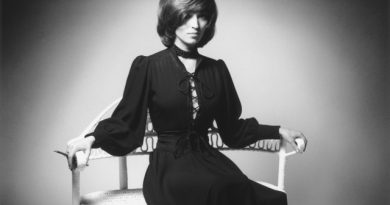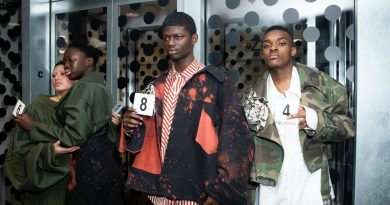Revlon CEO Debra Perelman on matching the ‘timelessness’ of her brands with the ‘timeliness’ of the moment
From pouring over Revlon magazine ads as a young girl to becoming the first female CEO of the company in 2018, Debra Perelman personifies the “emotional connection” consumers have with beauty.
“A big focus of mine has always been, ‘How do you utilize these iconic brands and products in order to really leverage this emotional connection that we can have with the consumer?’” said Perelman on the Glossy Beauty Podcast. For Perelman, this emotional connection is rooted in her own mainstay products, like Revlon’s Super Lustrous lipstick, which she used as a teen, and her grandmother’s perfume.
By maintaining the aspect of heritage while also adapting to changes in the beauty industry and the world, in general, “We’re able to create beauty innovations to inspire confidence and ignite joy in the consumer,” Perelman said.
While Revlon has maintained a focus on personal beauty and confidence throughout the brand’s history, the emergence of Covid pushed to the forefront of the beauty industry the ideas of “[making] sure that people are staying safe” and “[giving] back to the communities around us,” she said.
Perelman facilitated Revlon’s adaptation to the pandemic by not only transforming some of the company’s production lines to make hand sanitizers and donating to underserved communities, but also navigating the management of employees who were managing Covid in their personal lives.
The pandemic also accelerated the desire for digitization within Revlon. “I was focused on making quick decisions, in terms of further accelerating our digital transformation,” said Perelman. To achieve this, Perelman “focused on moving from a siloed organization to a much more collaborative organization,” with small “pods”, or teams, centered on e-commerce, product development and marketing.
In addition, Perelman emphasized her mission to transform Revlon’s oldest, most iconic beauty brands, Revlon and Elizabeth Arden. The focus: diversity, inclusion, and sustainability — not only for consumers, but also for Revlon employees behind the scenes.
“For Revlon, the future is just so bright,” said Perelman, who hopes to “leave [the company] in a way that’s a bit more positive than when I started.”
Below are additional highlights from the conversation, which have been lightly edited for clarity.
Commitment to sustainability
“When you look at Revlon today — not only Revlon, but the other brands — we have been able to over-deliver on our goals of sustainability… When you look at the product portfolio, you can see this coming through. What’s very exciting is we were the first to come to the mass [market] with a certified seal from the Environmental Working Group, on our Revlon primers and, most recently, our Almay eyeliners. We were paving the way, in terms of: How far can you go in color cosmetics, in terms of sustainability? We carry this on in our Revlon professional products, where our hair color is organic and vegan, and the packaging uses 60% less plastic as well as 25% less paper. I can continue on with American Crew, where we have 100% TCRPT plastics. We’ve made a commitment in the mass market, where all our displays will be recyclable with at least 30% recycled content by 2023. So we continue on this path of sustainability for Revlon and across all of our brands, which I believe really resonates with the consumer today; he or she is looking for that as part of the purpose of brands.”
Blurred lines between the digital and physical markets
“As we started to see the markets open up, we started to see that consumers wanted a retail experience. So today, it really is about an omnichannel experience. Retail is coming back; retail is not dead, as so many had said during 2020. It’s far from it. We are actually really excited to see the consumer going back into stores and driving us to rethink the consumer experience in-store and online. It really means a true omni-experience. [When] omnichannel was talked about a couple of years ago, things were not where they are today. Today is where you’re connecting the consumer and having different experiences where she can interact digitally at the counter, and we’re doing that [with] Elizabeth Arden. You have digital shade finders and digital fragrance finders, and then when [the customer] goes online to elizabetharden.com, they see that they can have one-on-one virtual consultations, in order to do the same thing. For us, that’s really important to continue to think of the channels holistically, as we approach the consumer. What’s also interesting — and when you look at the bricks-and-mortar channel — is how much these channels have started to blur. The lines between prestige and masstige, and the lines between masstige and mass have started to blur.”
The women who forged the path
“It absolutely has been very humbling… to be the first female CEO of Revlon and to be one of the few CEOs of large beauty companies today. I don’t take that lightly, being a part of the legacy of such an iconic company with iconic and powerful brands, and forever being tied to that. That is something that I always want to remember, as I’m leading this company, because I really do stand on the shoulders of so many who’ve come before me. I know people and women say this a lot… that the path is forged by those who come before us. And there were many within Revlon who helped forge that path, including Kathy Dwyer within Revlon, who launched Colorstay protected technology, as well as my first boss under Almay, Vanessa Solomon, [along with] other companies who have had these incredible CEOs. I would be remiss if I did not mention all of the indie brand entrepreneurs, who are majority female, who have launched these incredible brands — either as standalone or those who get acquired — that have also forged this path. So I stand on everybody’s shoulders today.”





